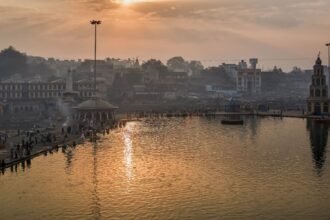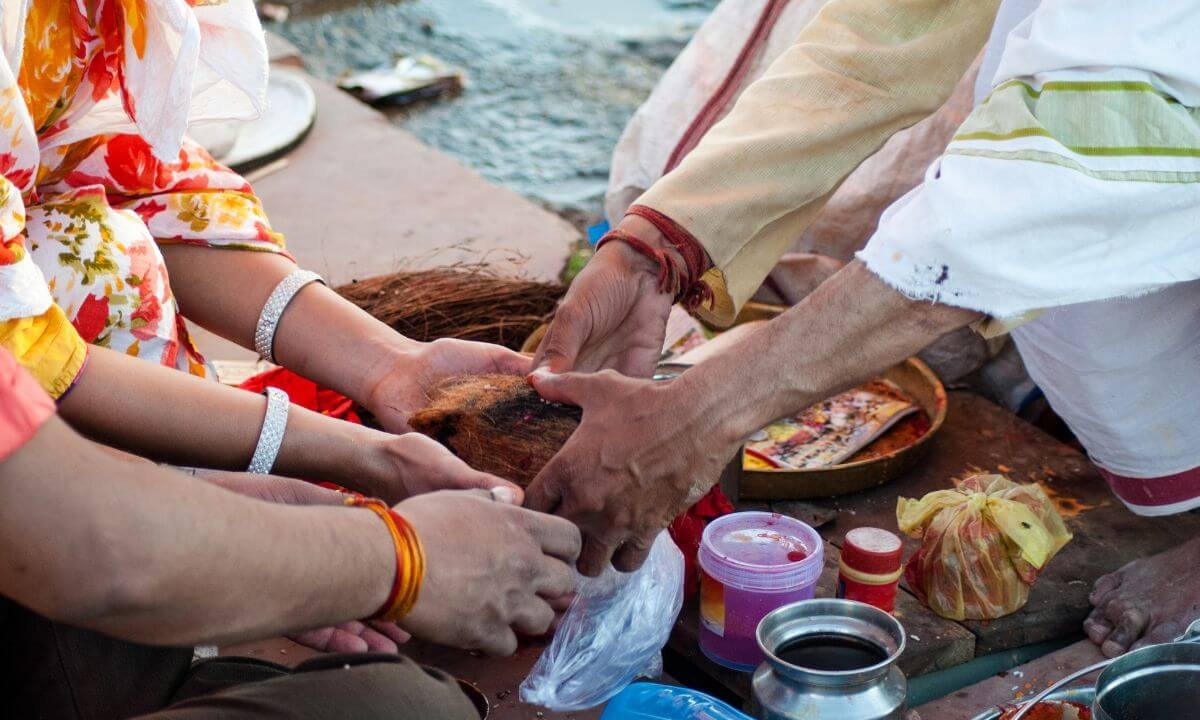The Kumbh Mela 2027 in Nashik is more than just a spiritual congregation—it’s a living embodiment of India’s ancient wisdom, filled with top rituals that carry centuries of symbolic, emotional, and religious power.
- 1. The Shahi Snan – The Royal Bath
- 2. Akhara Processions – March of the Saints
- 3. River Aartis – Worship of the Divine Flow
- 4. Peshwai – Grand Arrival of Akharas
- 5. Silent Meditations and Yajnas by Sadhus
- 6. Discourses and Satsangs by Spiritual Masters
- 7. Annadan – The Sacred Offering of Food
- 8. Pilgrim Bathing – The Collective Snan
- In Conclusion
Attending the Kumbh is not just about witnessing a large crowd; it’s about being present for sacred moments that transform, uplift, and connect millions of souls. Here’s your guide to the top rituals and spiritual experiences you absolutely must witness during your visit to Kumbh Mela 2027.
1. The Shahi Snan – The Royal Bath
The most important and visually iconic ritual of the Kumbh Mela is the Shahi Snan.
What it is:
- A ceremonial dip in the holy river (Godavari in Nashik) performed by the 13 Akharas, led by Naga Sadhus
- Held on astrologically significant days, especially Amavasya and Purnima
- Marks the spiritual high point of the Kumbh for both saints and pilgrims
Why it matters:
- Believed to cleanse lifetimes of karma
- Sparks an atmosphere of divine energy across the ghats
- Offers rare views of akhara hierarchies, symbolism, and unity
Pro Tip: Arrive early and find a secure, respectful vantage point to observe this breathtaking ritual.
Also read: Capture the Sacred: Photography Tips for the Next Kumbh Mela 2027
2. Akhara Processions – March of the Saints
Before each Shahi Snan, the Akharas proceed to the ghats in majestic processions.
Highlights include:
- Naga Sadhus covered in ash, brandishing tridents and chanting mantras
- Elephants, horses, and drums creating a royal atmosphere
- Decorated chariots carrying spiritual leaders or Mahamandaleshwars
- Devotees lining the paths, offering flowers and chanting prayers
Spiritual Significance:
- Symbolizes spiritual conquest over ego and ignorance
- The order of processions reflects centuries-old traditions and agreements
This is the most photographed and mesmerizing moment of the Kumbh Mela.
3. River Aartis – Worship of the Divine Flow
Every evening, as the sun sets over the river, priests and pilgrims perform Ganga or Godavari Aarti with lamps, chants, and bells.
What to expect:
- Oil lamps twirling in rhythm with mantras
- Conch shells blowing to mark the transition from day to night
- Devotees releasing floating diyas and flowers on the river
- A quiet, meditative energy as thousands bow in unison
Spiritual Message:
- Reminds devotees of the sanctity of nature, water, and cosmic rhythm
- Encourages inner purification through devotion and humility
Tip: This is a perfect time for meditation, photography, or silent reflection.
4. Peshwai – Grand Arrival of Akharas
The Peshwai procession marks the arrival of an Akhara at the Kumbh Mela grounds.
It features:
- Saffron flags, dhol players, and decorated animals
- Joyous crowds welcoming the saints
- Public addresses and blessings by Akhara leaders
Spiritual Insight:
- Peshwai represents the beginning of spiritual energy at the Mela
- It is not just a celebration, but a proclamation of dharma arriving to sanctify the space
Catch this ritual for a unique blend of tradition, spectacle, and spiritual pride.
5. Silent Meditations and Yajnas by Sadhus
Beyond the big processions and Snans, some of the most powerful moments are quiet.
Look out for:
- Sadhus meditating in deep stillness by the river
- Yogis practicing hatha yoga or tapasya (austerity) in solitude
- Continuous yajnas (sacred fire rituals) being performed in camps
- Chanting of Vedic hymns and Sanskrit mantras creating a vibrational field
Tip: Spend time in quieter sections of the Mela to observe these sacred practices—these are the heartbeats of the Kumbh.
6. Discourses and Satsangs by Spiritual Masters
Throughout the Mela, renowned gurus, acharyas, and saints hold open discourses on spiritual philosophy, scriptures, and life lessons.
Expect:
- Talks on Bhagavad Gita, Upanishads, Puranas, and Yoga Sutras
- Q&A sessions and spiritual storytelling
- Group bhajans and kirtans that uplift the soul
These gatherings are where the wisdom of Sanatan Dharma is passed on, free for all who seek.
7. Annadan – The Sacred Offering of Food
Many akharas and spiritual organizations perform Annadan, the sacred donation of food.
- Open to all, regardless of religion, caste, or class
- Considered one of the highest forms of service
- Symbolizes compassion, unity, and shared humanity
Participating or volunteering in Annadan is a humbling, unforgettable experience.
8. Pilgrim Bathing – The Collective Snan
On major bathing dates, millions of ordinary pilgrims take the holy dip.
What makes it special:
- A silent but powerful wave of faith in motion
- Moments of prayer, tears, joy, and surrender
- Scenes that blend the personal with the cosmic
This collective act reflects the essence of the Kumbh Mela: unity in devotion.
In Conclusion
The rituals of Kumbh Mela 2027 are not mere performances—they are gateways to the sacred, connecting ancient tradition with personal transformation.
Whether it’s the grandeur of the Shahi Snan or the simplicity of a sadhu’s meditation, each moment offers a glimpse into the divine. Be present, be respectful, and let the rituals of the Kumbh open something timeless within you.





